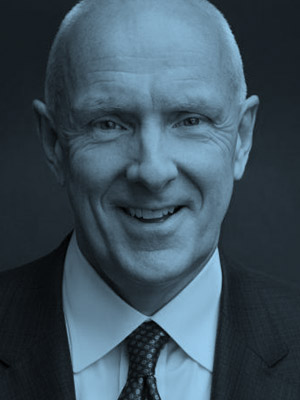
Stagnation or Risk: CEO Warner Thomas on the Shape of Things to Come
Taking on risk today is the only way to make it tomorrow.
That’s the underlying message from Warner Thomas when giving his perspective on the long-term outlook for the healthcare industry.
Thomas, president and CEO of Louisiana-based Ochsner Health since 2012, has just rotated off MedPAC after serving on the committee for a six-year term. MedPAC is a nonpartisan legislative branch agency that provides Congress with advice and analysis on the Medicare program.
In both of his roles, Thomas has had a front-row seat to observe, assess and lead the evolution of healthcare through moments of significant change. From that, he has evolved a worldview of a future that requires flexibility and creativity and is rooted in these assumptions:
- Stagnation is riskier than risk
- Scale is necessary
- Growth must have a purpose
Taking on risk
From his MedPAC experience, Thomas knows the Medicare numbers don’t work. His data is nothing shocking or new. Life expectancy has risen significantly while the age of eligibility has held at 65. Meanwhile, the number of workers (to fund the benefit) per Medicare enrollee has dropped by almost half.
“It’s a very unsustainable situation,” he said. “It’s pure math that doesn’t work.”
In the absence of a political solution – which Thomas doesn’t see happening – there’s a critical need to move into global payment models. Not easy, but likely more realistic. “People are moving into Medicare Advantage, ACOs are starting to have an impact, but there has to be a bigger move into those programs and more upside for providers,” he said. “My hope is for more alignment of economic risk with the providers, I think we’ll take better care of people more cost effectively.”
For providers, moving in that direction – or being ready if/when Medicare pushes them further toward capitated care – means having the right mindset and infrastructure. On the first point, it’s recognizing that taking on risk is actually a safer bet than the status quo. On the second point, developing the right infrastructure means growing strategically in an environment where it’s hard to see past the next few days, let alone the next few years.
There’s value in scale
Thomas said the need to grow comes at least in part due to lower revenue per capita caused by more people converting from commercial coverage to Medicare and to more shifting onto Medicaid. It’s a challenge that Thomas has experienced in the Gulf South. Navigating revenue pressure requires flexibility and creativity. As an example, emerging from Hurricane Katrina, Ochsner purchased several hospitals and kick-started its physical growth. In many cases, they knew routine acquisitions weren’t viable options.
“There were organizations that didn’t necessarily want to join us or were more of a governmental or service district hospital,” he recalled. “Typical not-for-profit mergers didn’t necessarily work, so we had to come up with other ways to build relationships in those areas.” In addition to that work, Thomas said targeted investment in specific service lines helped differentiate Ochsner from other providers.
Today, Katrina’s challenges put the new world of COVID in perspective. Thomas said success going forward will require blending “a strong physical footprint with distributed ambulatory care and broader regional connections, along with a strong digital footprint – digital connections with your patients and digital services.” That includes the obvious telehealth, but also digital marketing – how and where patients find doctors online. And it involves growing and perfecting existing services in light of new trends.
Again, not easy. As strategic plans are being reevaluated or even torn up by healthcare providers across the country, taking the long view is a challenge. “You still have to make those bigger strategic moves while you’re working day to day taking care of the second wave of COVID patients and making sure your clinics are open and operating effectively.” Thomas said. “You have to work in this uncertain environment and also make educated bets for the future.”
He reiterated the need for strong vision and agility, whether it’s due to a global pandemic or any other disruption. “You have to move towards a clear point of view and understand that 30 days from now, 60 days from now, you may have new or different information,” and then adjust accordingly.
Growth for a purpose
Growth is necessary in service to a bigger vision. It’s not a purpose unto itself. Health systems, Thomas said, shouldn’t be buying and building just to buy and build.
“If you’re not growing, you’re stagnant,” he said. “And it’s not growth for growth’s sake. If we can take care of more people and do it well, why wouldn’t we want to do that? Why wouldn’t we want to touch more lives and have a bigger impact?”
The pride and confidence in that statement is clear. If you’re good at what you do, why hold back? After all, don’t health systems carry a unique responsibility that can’t be fulfilled by other stakeholders within the US healthcare system? Improving the health of the community takes effort from all sides, but “health systems, not government or insurers, are in the best position to drive that,” Thomas said.
It’s an approach that takes on even more weight today. In a moment when racial injustice has been brought to the forefront of American society and the pandemic has created a stark, tragic reminder of the health disparities experienced by Black and Latino populations, Thomas said he recognizes healthcare providers’ crucial role in making things better. Growth and partnerships are integral to helping close the gap, but – again – they are tools.
“Ochsner is opening more community health centers across the state of Louisiana and targeting underserved areas,” he said. “Our focus is to do our part to help address health disparities and underserved areas. We believe it’s the right thing to do and that we can have an impact. But, at the same time, we’ve got to do it in partnership with the state and with the communities that we’re in, because we can’t do it alone.”
The shape of things to come
Of course, some providers are better situated to move forward from a position of strength, growing and taking on risk. Thomas cited the recent partnership plans for Beaumont and Advocate Aurora as an example of two strong organizations working “to address the future together better than they can separately.” Closer to home, Ochsner is completing a merger with Lafayette General Health later this year. Joining forces, “Makes total sense for them and for us,” says Thomas. It’s two strong providers combining to “drive a broader healthcare agenda in the region.”
But what about hospitals and health systems that, for whatever reason, aren’t coming from the same position of strength?
“I think you’re going to see more consolidation – more national and super-regional systems,” he said. “We’re going to see more hospitals struggle. And I think we’re going to see a greater differential between those that are performing well and those that are that are not. The divide is going to get bigger, and the ability to invest and to address change in the future is going to widen. Those things are going to be drivers of consolidation.”
A mindset for the future
Managing the moment and planning for an uncertain future while dealing with the sheer exhaustion of a drawn-out crisis is a lot for healthcare leaders. Thomas acknowledged the challenges, then pointed to Disney’s recently departed CEO, Bob Iger.
“Iger says no one wants to work for a pessimist,” Thomas said. “You can’t be blindly optimistic, but you have to look for the good things and manage towards that. There are a lot of things that work really well in our healthcare system and there are a lot of things that don’t. As leaders we have to have the courage to take them on, be honest, and push ourselves to the next level.”
Warner Thomas is President and CEO of Ochsner Health, having served in that role since 2012. He previously served as President and Chief Operating Officer from 1998-2012.
Thomas was appointed to the Medicare Payment Advisory Commission in 2014 and completed his term in 2020. He has served as Chairman of the American Hospital Association Section for Health Systems Governing Council and is a past member of both the Board of the American Medical Group Association and the Association of American Medical Colleges Advisory Panel for Health Care and Council of Teaching Hospitals. Additionally, Thomas is a fellow of the American College of Healthcare Executives, a Louisiana Hospital Association board member and a member of both the Young Presidents Organization and New Orleans Business Council.
Thomas received an undergraduate degree in accounting and computer information systems from New Hampshire College in Manchester, N.H., and his Master of Business Administration degree in 1994 from Boston University Graduate School of Management. He is also a certified public accountant. For his full bio, click here.
Illustrations by Shannon Threadgill

